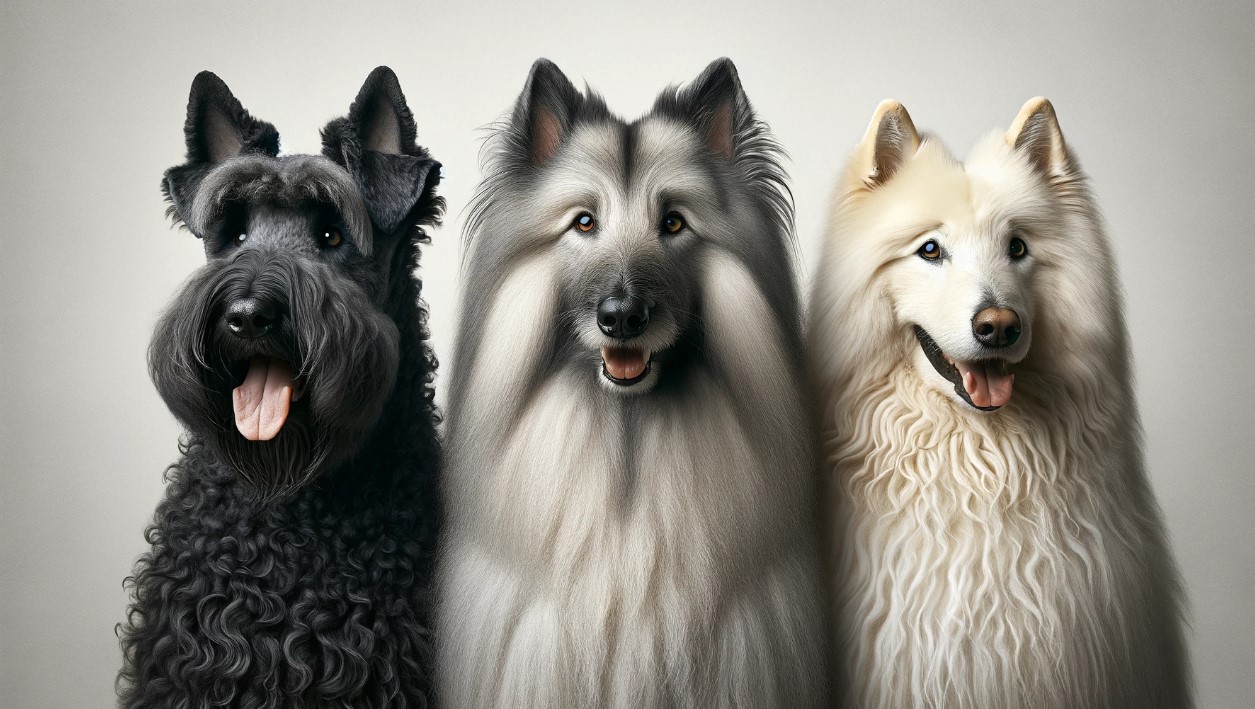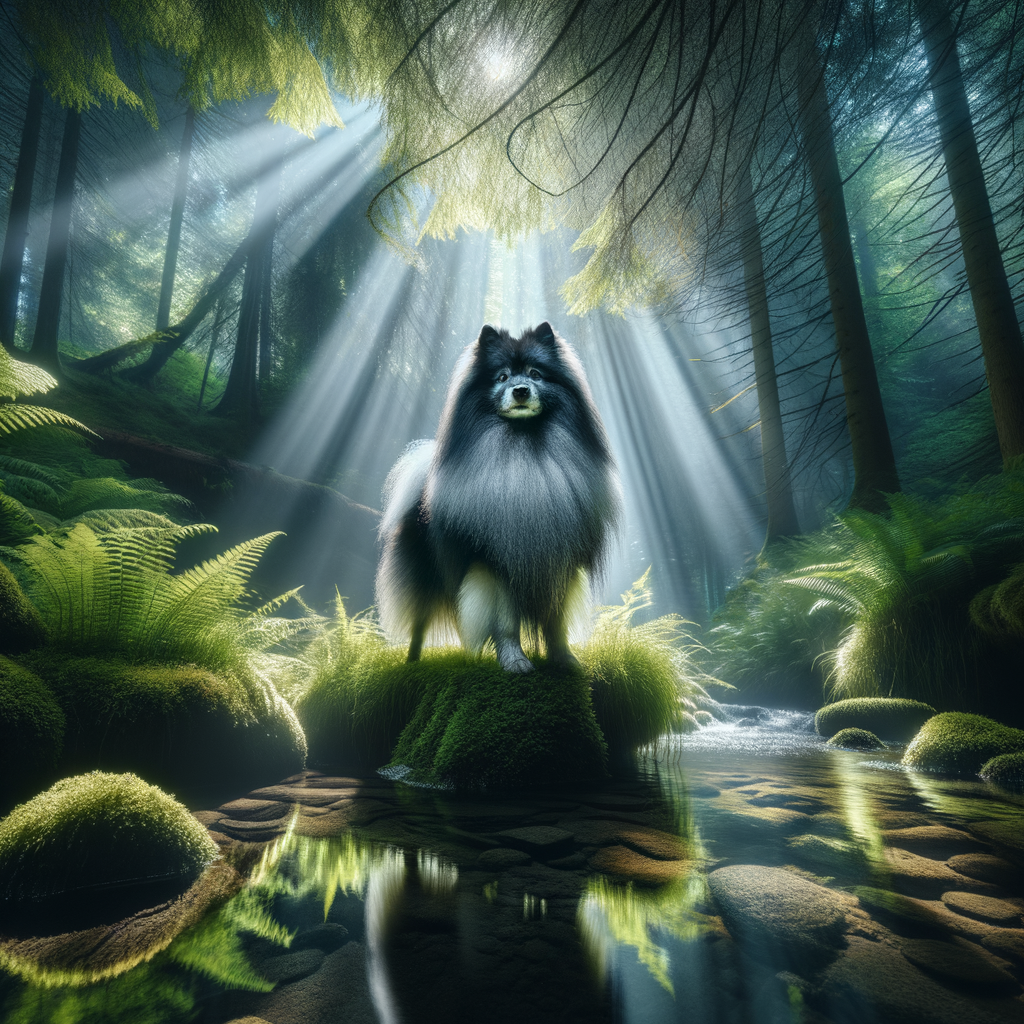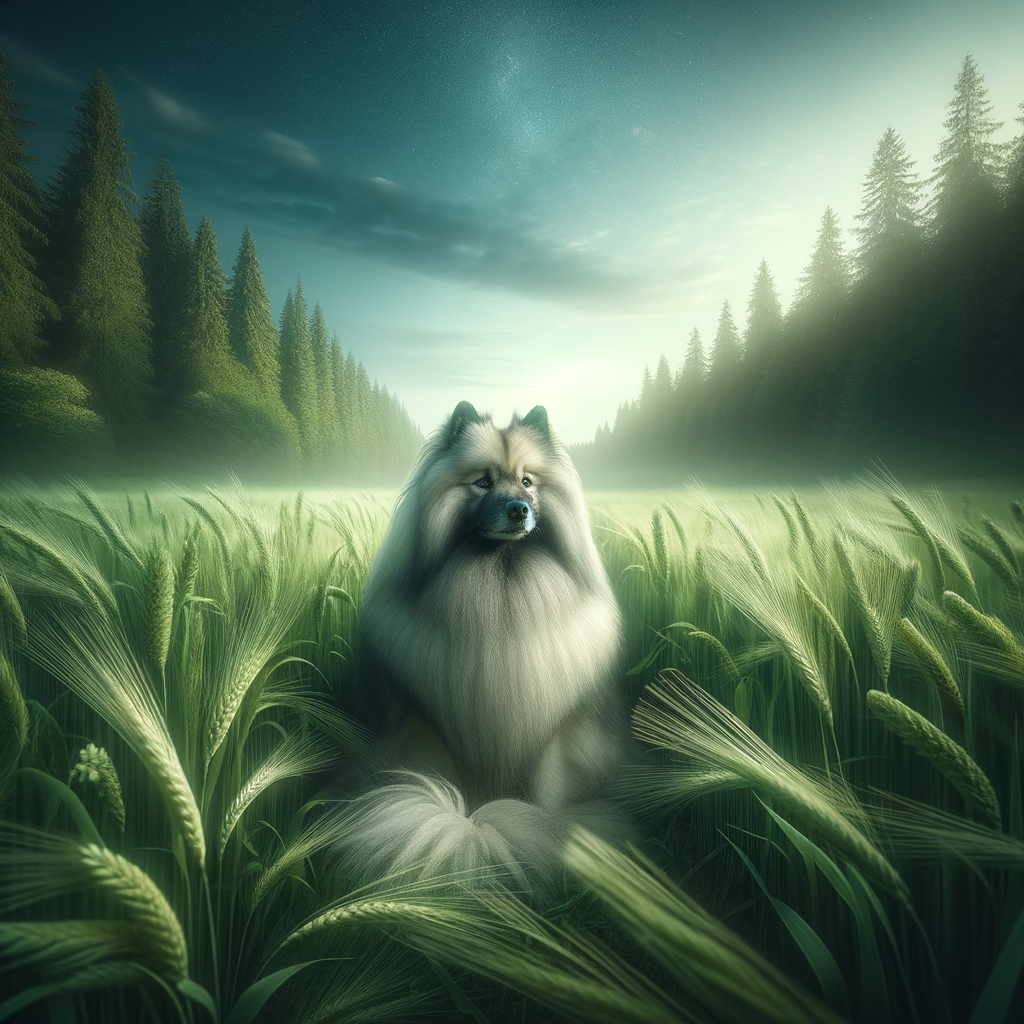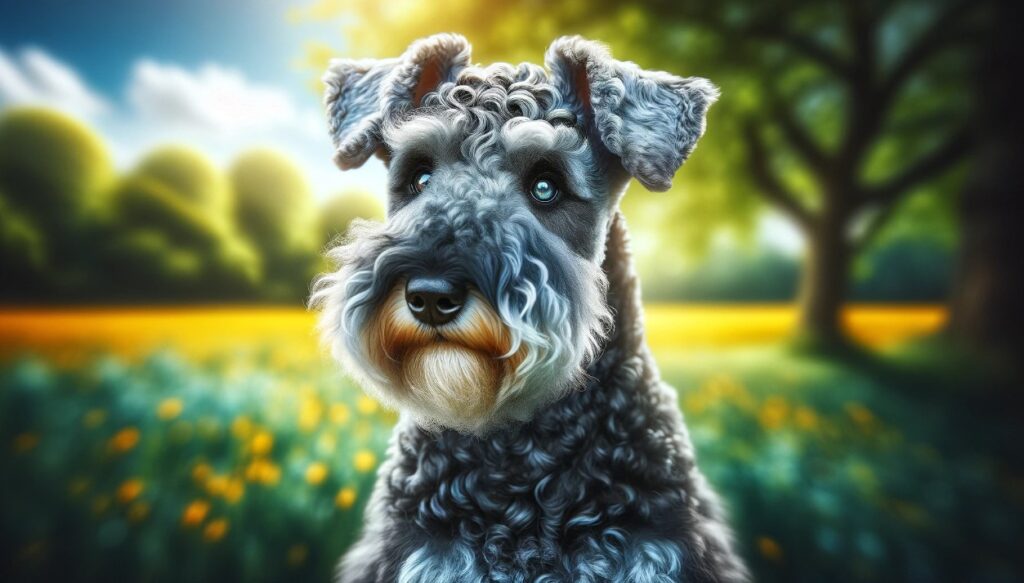As a holistic veterinarian and a dog lover, I know that one of the joys of being a pet parent is discovering the unique characteristics, personality traits, and histories behind different dog breeds. That’s why I’m thrilled to share with you today some fascinating facts about the dog breeds that start with K. From the majestic Komondor to the charming King Charles Spaniel, ‘K’ breeds are as varied as they are lovable!

Understanding dog breeds is more than just a fun trivia exercise. It’s about knowing what to expect from your fur baby in terms of behavior, size, grooming needs, and health issues. It’s about matching your lifestyle with the right breed. And often, it’s about connecting with a piece of heritage, since dog breeds are named after their places of origin, their functions, or their breed creators.
Now, let’s dive into our listicle of K-named dog breeds. I’ll walk you through the defining characteristics of each breed, and share some tips on how to care for them. Whether you’re considering bringing a ‘K’ breed into your home, or you’re just curious to learn more about these canine companions, this guide is for you.
Remember, choosing a dog is not just about the breed. Every dog is unique and deserving of love. But understanding breed traits can help ensure a good match and a happy life together. So, let’s get started on our ‘K’ journey!
Understanding Dog Breeds
Picture this: you’re walking through a park, and a particularly handsome pooch catches your eye. Its unique look and distinct behavior make you wonder: “What breed is that?” Welcome to the fascinating world of dog breeds, a world that holds the key to understanding your canine companion better. In this section, we’ll dive into the significance of dog breeds and the intriguing process of how they’re named – an exciting journey that’s sure to leave you eager to explore further.
The Significance of Dog Breeds
Unraveling the tapestry of dog breeds isn’t just about satisfying curiosity; it’s about appreciating the marvels of canine genetics and understanding our furry friends on a deeper level. Dog breeds carry the essence of their heritage, each having its specific characteristics, behaviors, and health predispositions.
For example, dog breeds that start with K like the Kerry Blue Terrier, are known for their energetic nature and strong prey drive. In contrast, the King Charles Spaniel with its regal lineage is often associated with a relaxed temperament and a high desire for companionship.
Comprehending the nuances of different breeds can guide you in choosing the right dog for your lifestyle. It facilitates a strong, harmonious bond, ensuring that you and your pet are a perfect match, mutually enriching each other’s lives.
How Dog Breeds are Named
As we embark on the journey of understanding the canine world, let’s take a detour through the intriguing process of how dog breeds are named. The nomenclature of dog breeds is a captivating blend of geography, physical characteristics, and purpose.
Many breeds are named based on their region of origin. For instance, the Keeshond hails from Holland, and the Komondor is a quintessential Hungarian breed. Others are named after their unique physical attributes like the King Charles Spaniel, which boasts an elegant, royal-like appearance.
The roles these dogs were bred for also play a part in their naming. The Komondor, with its distinctive, corded coat, was bred for herding sheep, lending it the title ‘Hungarian Sheepdog’. Similarly, the Keeshond, originally bred as a watchdog on Dutch barges, now bears the colloquial name ‘Dutch Barge Dog.
So, the next time you hear a breed name, remember, it’s not just a name. It’s a story – a story of the breed’s origin, its characteristics, and its purpose. And now, we’re about to plunge into the fantastic stories of some special K-named breeds. Stay with me as we navigate this exciting terrain!

Listicle: Dog Breeds That Start With K
Overview of K-Named Dog Breeds
As a dog parent, you might be curious about dog breeds starting with ‘K’. The world of K-named canine companions is diverse and fascinating, with each breed having its unique charm, characteristics, and needs. Whether you’re an aspiring dog parent, a trivia enthusiast, or just exploring your options for future adoption, this list will serve as a comprehensive guide to K-named dog breeds.
Specific Breeds Starting With K
Here are some of the dog breeds that start with K:
– Komondor: Originating from Hungary, this breed is also known as the ‘Hungarian Sheepdog’. Komondors are known for their distinctive corded coats that resemble dreadlocks. They were traditionally used as livestock guardian dogs.
– Keeshond: This is a medium-sized breed that was once popular as a companion and watchdog on Dutch barges. They are recognized for their thick double coat, bushy tail, and expressive, fox-like face.
– Kerry Blue Terrier: Named after County Kerry in Ireland, Kerry Blue Terriers have a distinctive blue-gray coat that gives them their name. They are known for their versatility, intelligence, and playful nature.
– King Charles Spaniel: These dogs are small, lovable, and have a royal history, hence their name. They are often seen in paintings of European royalty. King Charles Spaniels are known for their friendly and calm nature, making them excellent companion dogs.
– Kuvasz: Yet another breed from Hungary, the Kuvasz was originally used as a royal guard dog. They possess a beautiful white coat and are known for their intelligence and courage.
– Kai Ken: Considered a national treasure in Japan, the Kai Ken is a rare and ancient breed known for its brindle coat. They are intelligent, agile, and have an easygoing personality.
– Kishu Ken: Native to Japan, this breed is treasured for its loyalty and bravery. They are muscular, medium-sized dogs with a mainly white coat.
Remember, each breed has distinct needs and characteristics. So, understanding these will be key to your dog parenting journey. Picking a breed that aligns well with your lifestyle and environment will ensure a happy and harmonious relationship with your furry friend.
In the next sections, we will go more in-depth into some of these K-named breeds, shedding light on their specific characteristics and care requirements. Keep reading to find out more about your potential K-named companion!
Komondor: The Hungarian Sheepdog
Meet the Komondor, a fascinating breed that certainly stands out in the crowd among the dog breeds that start with K. Known for its distinct and unique coat, the Komondor also bears the nickname of “mop dog”. Here, we’ll delve into the distinct characteristics of the Komondor and provide some valuable insights into its care and maintenance.
Characteristics of Komondor
The Komondor is a robust and sturdy breed, originally bred in Hungary for livestock guarding. It carries a muscular and athletic body under its heavy coat. The breed is characterized by its long, corded coat that can reach up to 9 inches in length. This unusual coat is not just for the looks, it actually serves a purpose – protecting the Komondor from weather extremes and even potential predators.
Personality-wise, the Komondor is quite remarkable. Known for its fearlessness and loyalty, it forms strong bonds with its family. This breed is known for its independent thinking, which can sometimes come off as stubbornness. However, this very quality is what makes them excellent guard dogs.
The Komondor is intelligent and needs mental stimulation. They can be reserved with strangers, so early socialization is key for a well-rounded dog. Komondors are generally quiet dogs but will not hesitate to bark when they sense something amiss, which is a nod to their guarding instincts.
Care and Maintenance of Komondor
While the Komondor has a lot of appealing qualities, caring for this breed requires some serious dedication, especially when it comes to grooming. That trademark coat requires regular care to avoid matting. Brushing a Komondor’s coat is not recommended as it disrupts the corded formation. Instead, separate the cords by hand when the dog is wet.
Regular exercise is a must for this breed to keep them physically fit and mentally stimulated. Komondors are large dogs and require a balanced diet to maintain their health and coat condition. Regular check-ups with the vet are also crucial, as the breed can be prone to certain health issues, such as hip dysplasia and skin problems.
Training a Komondor can be a challenge due to their independent nature. They respond best to firm, consistent training methods. Socialization from a young age is essential to help them get along with other dogs and people.
In conclusion, owning a Komondor is a long-term commitment. This breed demands a lot of care, but in return, you get a loyal and fearless companion. If you have the time and dedication, a Komondor could be a perfect addition to your family. After all, dog breeds that start with K offer a unique blend of traits and characteristics that make them stand out from the crowd.

Keeshond: The Dutch Barge Dog
Traits of Keeshond
The Keeshond, pronounced ‘kays-hond’, is a distinctive breed that originates from the Netherlands. This K-named dog breed is often referred to as the Dutch Barge Dog due to their historical role as companions and watchdogs on barges and boats in the canals and rivers of Holland.
Keeshonds are medium-sized dogs, with males standing between 17 to 19 inches tall and weighing around 35 to 45 pounds. Females are slightly smaller, standing 16 to 18 inches tall and weighing 30 to 40 pounds.
One of the most striking features of the Keeshond is its lush, thick double coat, which is typically silver and black. This coat, combined with their plume tail that curls over their back, gives them a wolf-like appearance.
Keeshonds are known for their friendly and outgoing personality. They are extremely affectionate and love being part of the family. They are also highly intelligent and quick learners, making them relatively easy to train.
How to Care for a Keeshond
Caring for a Keeshond requires a commitment to regular grooming due to their thick double coat. They shed heavily twice a year, during which time daily brushing may be necessary to keep their coat healthy and prevent matting. Even outside of these periods, Keeshonds will require brushing at least once a week.
Despite their thick coat, Keeshonds are not outdoor dogs. They thrive on human companionship and should live indoors with their family. They are also a very active breed and require regular exercise to keep them healthy and happy. This can include walks, play time, or even agility training.
When it comes to feeding, a Keeshond should be given high-quality dog food appropriate for their age, size, and activity level. They can be prone to obesity, so it’s important to monitor their food intake and ensure they are getting enough exercise.
Keeshonds are generally healthy dogs, but like all breeds, they’re susceptible to certain health conditions. These can include hip dysplasia, heart disease, and skin problems. Regular vet check-ups and keeping an eye on their health is essential for a long, happy life.
In terms of training, Keeshonds are intelligent and eager to please, which can make training a relatively straightforward process. However, they do respond best to positive reinforcement techniques. Harsh corrections or training methods can often be counterproductive with this sensitive breed.
In conclusion, the Keeshond is a beautiful, friendly, and intelligent dog breed that makes a wonderful family pet. With proper care, training, and lots of love, a Keeshond can bring joy to your home for many years.
Kerry Blue Terrier: The Irish Blue
When you think about dog breeds that start with K, the Kerry Blue Terrier, affectionately nicknamed the “Irish Blue,” should be a name that comes to mind. This breed hails from the Emerald Isle and has an aura of charm that captures hearts worldwide.
Features of the Kerry Blue Terrier
The Kerry Blue Terrier is a mid-sized dog breed known for its soft, wavy, blue-gray coat that resembles plush velvet. They stand about 18 to 20 inches tall at the shoulder and weigh between 33 to 40 pounds. Their eyes are typically dark and expressive, giving them a spirited and mischievous look.
One of the unique traits about the Kerry Blue Terrier’s coat is that puppies are born with a black coat that gradually lightens to its signature blue-gray as they mature. Also, this dog breed does not shed much, making it an excellent choice for allergy sufferers.
When it comes to personality, Kerry Blue Terriers are known for their tenacity, courage, and high energy levels. They are also extremely intelligent and quick learners, making them a delight to train. However, they can be independent and stubborn, requiring a firm, consistent hand in training and socialization.
Kerry Blue Terriers are also well-regarded for their exceptional loyalty and protective nature. They are great with families, and their love of play makes them a great companion for kids. However, due to their terrier instincts, they may not get along with other pets, particularly dogs of the same sex.
Tips for Raising a Kerry Blue Terrier
Raising a Kerry Blue Terrier can be a rewarding experience, but it requires commitment and patience. Here are some tips:
- Exercise: Kerry Blue Terriers are energetic dogs that need plenty of daily exercise to keep them happy and healthy. They love to run, play fetch, and even excel in dog sports such as agility and obedience.
- Grooming: Their unique coat requires regular brushing to prevent tangles and mats. Professional grooming every six to eight weeks is also essential to maintain their distinct appearance.
- Diet: They need a balanced diet to maintain their energy levels. High-quality dog food suited to their age, size, and activity level is best.
- Socialization: Early socialization is vital for Kerry Blue Terriers. Expose them to various people, places, and experiences when they’re young to help them grow into well-rounded dogs.
- Training: Start obedience training early. Using positive reinforcement techniques such as treats and praise works best with this breed.
Raising a Kerry Blue Terrier can indeed be a handful, but with proper care and understanding, it could be one of the most rewarding experiences ever. Their loyalty, love, and zest for life make them a wonderful addition to the right family.

King Charles Spaniel: The Royal Breed
Attributes of King Charles Spaniel
The King Charles Spaniel, also known as the English Toy Spaniel, is one of the most delightful dog breeds that start with k. These dogs are the epitome of elegance and charm, earning their name from King Charles II of England who was very fond of them.
King Charles Spaniels are small, compact, and balanced in their physique. They have a distinctive dome-shaped skull, and their eyes are large and round, exuding a gentle and affectionate gaze. Their coat is silky, long, and usually comes in four color variations: Blenheim (chestnut and white), Tricolor (black/white/tan), Ruby (solid red), and Black and Tan.
King Charles Spaniels are more than just their royal appearance. They are known for their friendly, affectionate, and easy-going nature. They fit well with families, singles, and seniors and are known to make excellent lap dogs. They’re generally quiet and unassuming, but they can turn playful when they’re in the mood. These dogs are intelligent and eager to please, which makes training them relatively easy.
Caring for a King Charles Spaniel
When it comes to caring for a King Charles Spaniel, they’re a pretty low-maintenance dog breed that starts with k. They do require regular grooming because of their long, silky coat. Expect to brush your King Charles Spaniel at least 2-3 times per week to prevent matting and tangling. They will need a bath once a month and more frequent during the summer months or if they spend a lot of time outdoors.
Like many small dog breeds, the King Charles Spaniel is prone to certain health conditions like heart disease and hip dysplasia. Regular vet check-ups are essential to catch any potential issues early and maintain their overall health.
King Charles Spaniels are quite active indoors and will do well in an apartment setting. However, they still require daily walks and playtime to expend energy and stay fit. They’re not the best choice for people who want a jogging companion, but they’ll happily chase a ball or romp in the yard.
It’s important to note that King Charles Spaniels thrive on human companionship and don’t like being left alone for long periods. They’re happiest when they’re with their human family, participating in all the fun and activities.
In terms of feeding, a high-quality dog food suitable for their age, size, and activity level is recommended. Be mindful of their portions as they are prone to obesity, which can lead to a host of health problems.
When raised in a loving environment, a King Charles Spaniel is sure to reward you with its unwavering loyalty and affection. Choosing to adopt this breed means welcoming a piece of royal history into your home and heart.
Recap of K-Named Dog Breeds
We’ve journeyed together, exploring and discovering an interesting line-up of dog breeds that start with K. From Komondor to Keeshond, Kerry Blue Terrier to King Charles Spaniel, we’ve dived into their unique characteristics, traits, and care routines.
Remember the impressive, mop-like appearance of the Komondor, a Hungarian sheepdog whose distinct coat is a sight to behold. Or the Keeshond, a true symbol of Dutch heritage with its plush two-layer coat and foxy face. Let’s not forget the Kerry Blue Terrier, an Irish breed known for its beautiful blue coat and playful nature. And finally, the King Charles Spaniel, a breed that carries a royal charm with its glossy, long-haired coat and soulful eyes.
Each of these dog breeds has a unique history, characteristic traits, and care needs that make them special. Whether it is the protective nature of the Komondor, the friendly disposition of the Keeshond, or the playful spirit of the Kerry Blue Terrier, or the affectionate temperament of the King Charles Spaniel, each breed has a distinct personality that makes it endearing in its own way.
Final Thoughts on Choosing a K-Named Dog Breed
Choosing a dog breed, especially from the intriguing list of K-named canine companions, is as exciting as it is significant. It requires understanding the breed’s specific needs, temperament, and suitability to your lifestyle.
Are you looking for a dog that can double up as a family protector like a Komondor? Or perhaps you’re searching for a friendly and cheerful companion like a Keeshond? Maybe you love the active, playful life and think a Kerry Blue Terrier would fit right in? Or you could be longing for a royal, affectionate friend like a King Charles Spaniel?
The decision is unique to you and should be made with careful consideration of the breed’s attributes and your own personal circumstances. Remember, every breed is special, and every dog deserves a loving home.
So, whether you’re choosing a loyal Komondor, an amiable Keeshond, a lively Kerry Blue Terrier, or a lovable King Charles Spaniel, you’re beginning a journey of companionship, love, and unforgettable memories. As you choose your K-named canine companion, remember that you’re not just bringing home a pet, but a family member, a confidante, and a friend for life.
No matter which breed you choose, rest assured that your life will be infinitely richer and more rewarding with your four-legged friend by your side. What a wonderful adventure awaits you and your K-named companion!
Frequently Asked Questions
Q1: What are some dog breeds that start with K?
A: Some dog breeds that start with K include the Keeshond, Kerry Blue Terrier, King Charles Spaniel, and Komondor.
Q2: What are some characteristics of the Keeshond breed?
A: Keeshonds are known for their friendly and outgoing nature. They are also intelligent, quick to learn, and make excellent family pets.
Q3: How much exercise does a Kerry Blue Terrier need?
A: Kerry Blue Terriers are active and energetic dogs that require regular exercise to keep them healthy and happy. This can include daily walks, playtime in the yard, or dog sports.
Q4: Are King Charles Spaniels good with children?
A: Yes, King Charles Spaniels are known for their gentle and affectionate nature, making them great companions for children. However, as with all dogs, it’s important to supervise interactions between dogs and young children.
Q5: What kind of environment is best for a Komondor?
A: Komondors are large, protective dogs that do best in homes with a large yard. They need plenty of space to move around and exercise.
Dr. Candy, a holistic veterinarian and certified raw dog food nutrition specialist, graduated from Oklahoma State University in 2009 with a DVM and has since specialized in companion animal nutrition, advocating for species-specific diets. With a background in wildlife rehabilitation and oil spill response, she combines holistic health and conventional medicine in her unique approach to treating chronic diseases, allergies, and autoimmune conditions in pets. As the owner of a veterinary practice in Colorado and an author, Dr. Candy is dedicated to educating pet parents and improving the health and happiness of animals.




